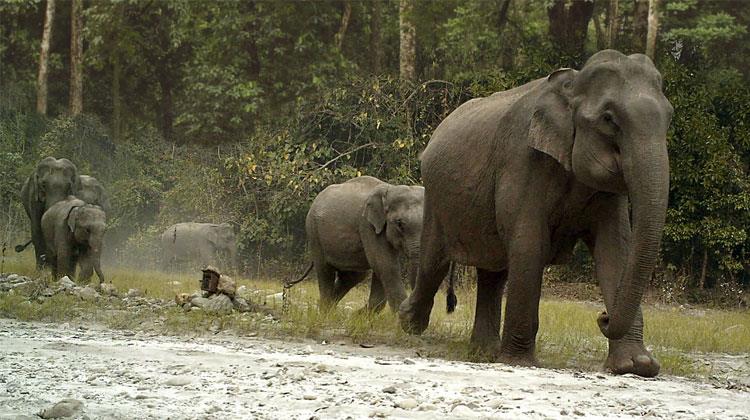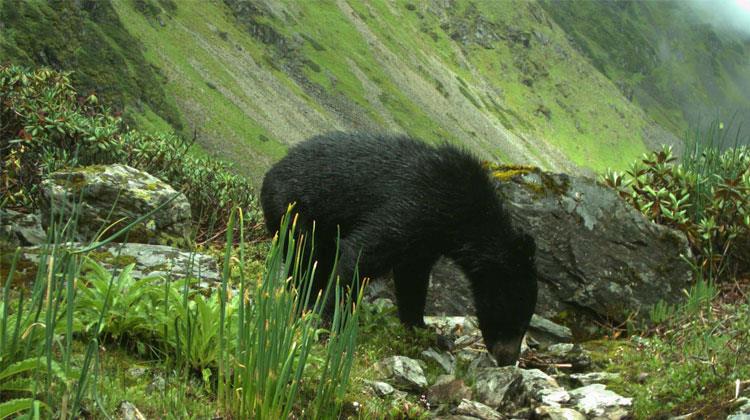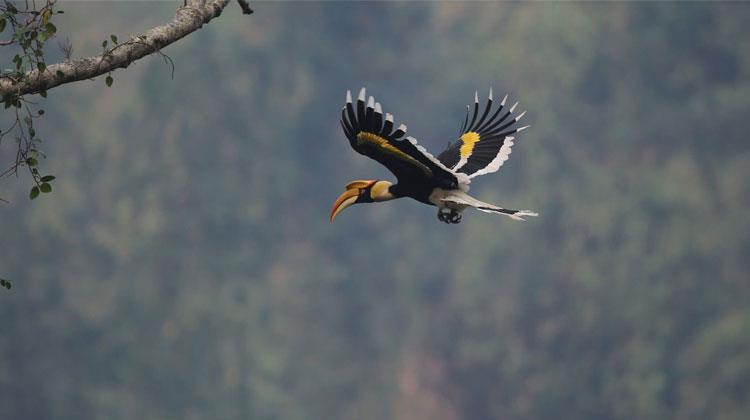Wildlife Sanctuary




Jigme Dorji National Park
With an area of 4,349 sq. km, the Jigme Dorji National Park is the largest protected area in Bhutan. It is one of the most biologically rich areas in the Eastern Himalayan region, and stretches from warm broad-leaved forests to permanent ice fields and glaciers on Bhutan’s north-western border.The monsoon rains and a varied topographical gradient, from just over 1,000 meters to more than 7,000 meters above sea level, account for this rich plant and animal diversity.
Sacred peaks such as Jomolhari, Tsherimgang and Jichu Drakey are prominent landmarks in the park. Glaciers and glacial lakes are interspersed in the mountains forming important head waters for some of Bhutan’s main rivers.
The alpine region houses numerous flowers such as the national flower blue poppy, edelweiss, orchids and rhododendrons among many others.
Royal Manas National Park
Situated in the south central Bhutan, Royal Manas National Park lies to the north of Manas National Park in Assam, which is a World Heritage Site; and to the south of Jigme Singye Wangchuck National Park. Royal Manas was declared a wildlife sanctuary in 1966 and thus, has the status of being the oldest protected area in Bhutan. Later, it was upgraded to the status of being a National Park and it became the first national park of Bhutan. Royal Manas National Park is one of the world’s few sites that offer us stupendous variety of life forms and ecosystems. Royal Manas wildlife sanctuary harbors thousands of animals and plant species including several globally endangered species.Sprawled across 1,023 km2, Royal Manas National Park with its adjoining India's Manas Tiger Reserve and Jigme Singye Wangchuck National Park constitute one of the largest landscape level protected areas in the eastern Himalayas. The Parks are full of tropical and sub tropical ecosystems and have evergreen tropical forests, sub-tropical forests and warm and cool broadleaf forests. There are about 45 species of mammals including gaur, extremely rare golden langur, Asian elephant, hispid hare, clouded leopard, Royal Bengal tiger, gangetic dolphin, pangolin, Himalayan black bear, clouded leopard, sloth bear and wild water buffalo in Royal Manas National Park.
Jigme Singye Wangchuck National Park
Sprawling across 1723 sq km, Jigme Singye Wanchuck National Park is the second largest protected area of Bhutan. Formerly known as the Black Mountain National Park, it has now been renamed after the present and fourth monarch of Bhutan. The Park boasts of a variety of habitats, vast tracts of primary forests and altitudes ranging from 200 m to 5000 m above sea level. There are sub-tropical and broadleaf forests in its south, low conifer forests in its center and perennial snow on the high peaks in its north. Situated in central Bhutan, Jigme Singye Wangchuck National Park is home to about 395 species of birds including the endangered rufous-necked hornbill, Ward's trogon, Satyr tragopan and white-bellied heron.Seven of the bird species that make this National Park their home are listed among the globally endangered species. Rainfall varies too in different areas of the National Park and thus, this wildlife sanctuary arbors wide diversity of climatic conditions, making it suitable for many different flora and fauna species. Jigme Singye Wangchuck National Park has one of the highest coverage of mature fir, pine and other types of broadleaf forests that are considered to be the one of the few virgin and undisturbed tracks of forests in the Eastern Himalayas. The terrestrial fauna found here includes rare and endangered species such as musk deer, Himalayan black bear, golden langur endemic to Bhutan, clouded leopard, red panda and Royal Bengal tiger.
Phipsoo Wildlife Sanctuary
Sprawling across 278 sq km, Phipsoo or Phibsoo Wildlife Sanctuary is the only sanctuary in Bhutan that has natural sal forests and is a prime habitat of Chital deer or the spotted deer Axis Axis. It lies entirely inside Sarpang dzongkhag and touches the borders of Indian State of Assam in the south. River Sunkosh Chhu flows to its west while it has Beteni geog in Tsirang dzongkhag in the north and Hile geog in the east. Phipsoo wildlife sanctuary has mostly tropical and sub-tropical ecosystem and vegetation. The rare and endangered animals that find their homes in this sanctuary include tigers, Asian elephants, gaur and golden langurs.Phipsoo sanctuary is relatively uninhabited, though you can find some sparse human population settled to its southwestern edge. It is about 50 km east of Phuentsholing. You can spot the rare hornbill here. This wildlife sanctuary occupies an important position biogeographically and is fully functional. Preliminary surveys of the flora and fauna have already been completed here while some other surveys are still going on in the region. The World-wide Fund for Nature is providing support in the conservation management programme of Phipsoo wildlife sanctuary and to ensure that the basic conservation infrastructure is in place.
Great Trip with Great Company
